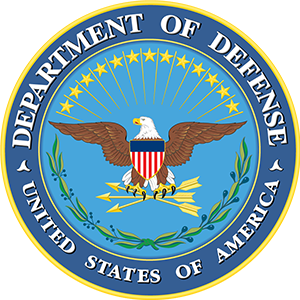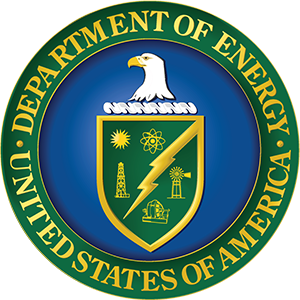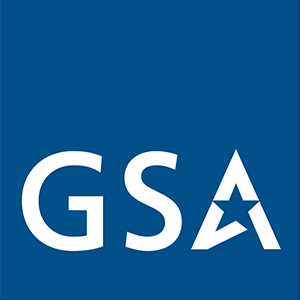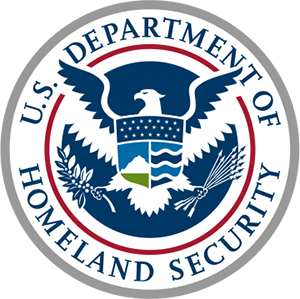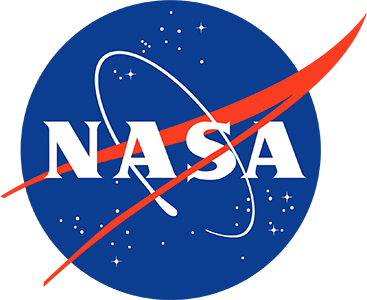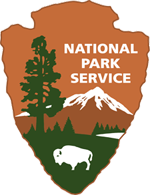Introduction
Within This Page
Mobile technology is transforming the face of infrastructure and facility life-cycle management. Stakeholders from maintenance technicians to senior executives can now deliver superior operational outcomes and lower the cost of operations using the powerful data collection, reporting, and enterprise-wide data visibility offered by mobile solutions for infrastructure and facilities management.
This page will review these mobile capabilities as they apply to key infrastructure and facility life-cycle areas such as space and occupancy management, asset maintenance, space surveys, asset and equipment surveys, building assessments, and incident reporting—as illustrated in Figure 1. The Central Infrastructure and Facilities Management System (the "Central System") manages all data entered by users connected directly via wired networks or via mobile apps. The Central System also automates computation tasks on data collected in the field using the mobile apps.
The technology options and security standards necessary for protected access and data privacy in a mobile environment will also be considered. Finally, the roles and responsibilities of various stakeholders essential for driving successful implementation and adoption of the mobile solution for infrastructure and facility operations throughout the organization will be explored.
The information below summarizes the attributes of a true enterprise class mobile infrastructure and facilities management system that helps deliver the benefits described throughout this article.
Description
Essential Attributes of an Enterprise-Class, Mobile Infrastructure and Facilities Management Solution
24/7 Availability—Essential for after-hours access by shift and offsite staff.
Multiple Supported Footprints—Tablets are better suited to tasks requiring a larger screen area such as viewing a floor plan. Smartphones with data access are adequate for tasks such as reviewing a list of maintenance work orders.
Mobile Operating Systems—Mobile facilities apps supported by widely used operating systems such as Android and Apple iOS are desired even if only one operating system is used within the organization. This ensures a smooth transition if the organization switches from one operating system to another.
Over-the-Air (OTA) Updates—Mobile device receives app software and data updates using the subscriber's telecom carrier data network.
User-friendly App Design—Encourages adoption across a large number of users; eases the development of workflows that encourage self-service across the user community.
Context-dependent App Views—Improves specificity, increases accuracy, and minimizes ambiguity of entered field data with the use of role-based app and form visibility, finger-friendly pick lists for data values and actions, and context-based show/hide form fields.
Mobile Device Camera—Attach site and asset photographs to field reports.
Bar Code Scanning—Uses mobile device camera to scan a variety of barcode formats such as UPC, Data Matrix, or QR codes; used to match a field asset to its data or create a new record for an unregistered asset.
Mobile App Data Synchronization (sync)—Uploads field data such as work order records from the mobile device to the central system; downloads tasks and data such as assigned work orders and surveys to the mobile device.
Redlining—records important field observations directly on floor plan views, asset views, and photographs taken onsite for later reference. Common redlining features may include text boxes, underlines, blocking, circles, and arrows.
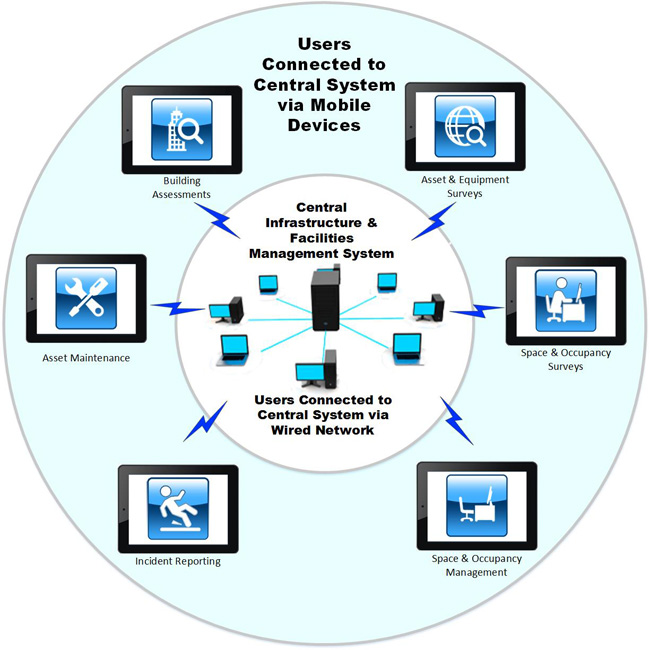
Figure 1: Mobile devices running function-based apps connected to central system.
Space Inventory and Occupancy Management
Space inventory often runs into millions of square feet at large enterprise organizations such as academic institutions, military and government facilities, large financial institutions, and global conglomerates. Infrastructure and facilities staff members at such organizations typically commute to different locations during the week, often to sites with no hard-wired connectivity to the company's IT network. In these situations, a tablet or smartphone that has a well-implemented set of space inventory and occupancy management apps can serve as a powerful productivity enabler. For example, a space planner can review room allocations and occupancy plans with space requesters faster and with greater assuredness using a mobile app that allows him to share up-to-date floor plan drawings that display current room assignments, room categories and types, occupancy and vacancy status, lease timelines, unavailable locations such as hazmat storage areas, and evacuation routes. In another situation, a request from a senior executive for a floor plan with room assignments for his or her department can be expedited with a few clicks by the offsite facilities manager. The benefits described above can be extended even more powerfully to space and occupancy surveys.
Space and Occupancy Surveys
The importance of periodic space and occupancy surveys is indisputable. They help organizations improve space utilization, adjust space allocations to better align with the organization's overall mission, and ultimately lower occupancy costs. However, the time-tested walkthrough survey with spreadsheet and pen, followed by a manual examination of the collected data, comes with a major drawback. A survey of a large portfolio of buildings can take weeks, if not months. Survey data is not actionable until the manual analysis has been completed, resulting in lost opportunities for improved space utilization or better suited departmental allocations.
A well-designed space and occupancy survey mobile app mitigates this drawback. For example, a multinational insurance company embarks on a space and occupancy survey at fifteen facilities nationwide. At each site, space and occupancy surveyors are equipped with a survey app installed on a tablet computer. The night before the survey, the space surveyor downloads floor plans from the central system for the site to be surveyed. Once onsite, and depending on the survey goals for each building and floor, the surveyor can pull up any one of a number of floor plan views to uniquely survey the floor by room category, room type, occupancy status, vacancy status, lease status, emergency routes, or hazardous material locations. During the occupancy survey, the surveyor may update the space occupancy status of a large department area that has been vacated. On another floor, during a survey of emergency routes, he finds a large section of railing missing from an exit stairway. He photographs the blocked location, redlines the vertical penetration representing the stairway with a circle to indicate the location of the missing railing, attaches the photo and redlined floor plan to the online survey form, and moves on to survey another floor. A quick sync of survey records ensures that the survey form for the emergency route survey reaches the maintenance supervisor who immediately issues a high priority work request to fix the railing. Figure 2 illustrates this workflow.

Figure 2: Information flow from space surveyor's mobile device to maintenance craftsperson in the field is accurate and rapid.
Furthermore, the central system can automatically aggregate survey data by floors, buildings, sites or geographies as the data are uploaded from mobile devices. Infrastructure and facilities managers can use this rapid aggregating capability to accelerate changes to near-term space allocation, and executive management can authorize cost saving steps such as moving staff from a low occupancy leased facility to an owned property.
Asset Maintenance
Mobile maintenance applications offer tremendous potential to power the organization towards its larger corporate goals. Menu-driven mobile views and predefined picklists maintain the accuracy and consistency of entered data across sites, buildings, geographies, and work teams. Maintenance metrics such as downtime hours per month and percentage of work orders completed on time owe their improvements to the mobile driven maintenance workflow. With the mobile app connected wirelessly to the central system, asset maintenance results can be instantaneously reflected in key corporate level metrics such as Return on Net Assets (RONA).
The workflow example illustrated in Figure 3 demonstrates this value. Supply airflow from an air handling unit has stopped, and an HVAC technician is assigned the work order. Two scenarios are depicted. In the first scenario, a missing hard copy service manual prevents the technician from learning about spare part specifications. With limited driving directions, the technician wastes time locating the building and unit. Once onsite, the technician does not have a spare drive belt to replace the broken one that has caused the problem. Furthermore, the technician, unfamiliar with the floor and equipment layout around the unit location, injures his arm while trying to negotiate tight clearance around the unit. A new technician dispatched the next day has to finish the job. At $60/hour, the billed amount for the job totals $540, assuming a total corrective time of 9 hours.
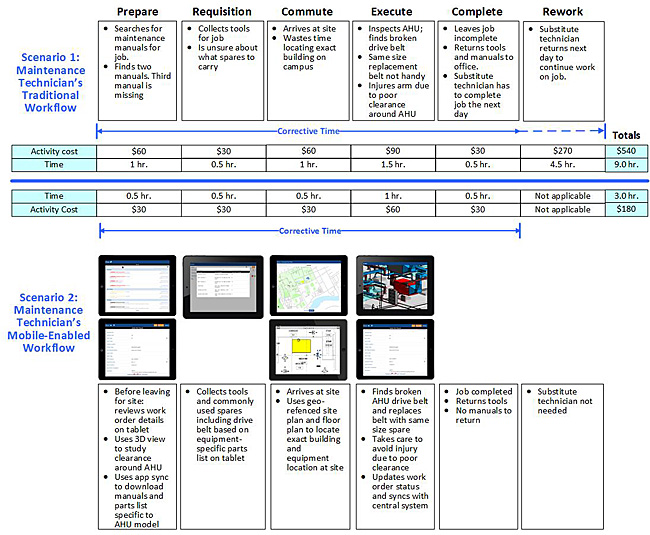
Figure 3: Example comparing results of maintenance technician's traditional workflow with mobile-enabled workflow.
In the second scenario, the technician, armed with a mobile maintenance app does much better. Prior to leaving for the site, the technician uses the mobile app to study the work order, downloads needed manuals, collects equipment-specific spares such as the drive belt, and familiarizes himself with the floor and equipment layout around the unit. A geo-referenced site plan accessible through the mobile app provides accurate directions and cuts commuting time. Once onsite, the technician takes precautions while negotiating clearance space around the unit, and proceeds to replace the broken belt. At $60/hour, the billed amount for the job totals $180 for a much shorter corrective time of just 3 hours, a savings of more than 65% over the manual process.
This example illustrates the powerful impact that a mobile-enabled workflow can have on performance and the potential improvements in workforce productivity. For all similar failures in a given time frame, the mobile-enabled workflow lowers the total corrective maintenance time resulting in a lower Mean Time to Repair (MTTR), and a reduction in downtime for the asset. The facilities department can also chalk up another work order that is completed on time. At the CFO's office, lower maintenance billings translate to lower operating expenses and an increase in net income on the company's income statement. All else being equal, an increase in net income results in an increase in return on net assets (RONA). On an annualized basis for a multi-campus enterprise organization such as a nationwide hospital chain or a number of automobile plants, the better performance, improvements in workforce productivity, and associated savings can be enormous.
Asset and Equipment Surveys
Mobile technology is instrumental in maintaining a high level of asset data quality. With asset data entered from the field and made available to decision-makers immediately after survey completion, asset management divisions can improve asset utilization, prioritize maintenance, improve asset utilization, reduce asset inventory and service costs, and ultimately increase the facility's return on assets.
For example, an asset intensive regional rail system does an asset survey at its fifteen major hub stations every five years. Asset surveyors are deployed to each station, tablet in hand. The mobile app lists separate survey tasks for individual assets such as platforms, elevators, escalators, footbridges, HVAC systems, and lighting towers.
At one station, the surveyor observes that a central elevator often stops between station levels. On the survey form, the surveyor details the negative impact of this malfunction on passenger movement and passenger safety, and the frequency or likelihood of the malfunction recurring. In addition, the surveyor can potentially assign this asset (the elevator) a safety score and a performance score based on his observations and in accordance with asset management policies. These field observations and measurements also serve as validation points to demonstrate compliance with international asset management standards such as ISO 55001.
Surveyors upload field survey data to the central system which uses the uploaded data to automatically calculate metrics such as an asset risk score for each surveyed asset. With the surveyed stations geo-referenced in the central system, divisional and local asset management teams can review asset survey data and recommended actions for each station by simply clicking on a station name on the railway network map.
Building Assessments
Timely infrastructure and facility assessments are essential for keeping a facility in the best operating condition. All assessments, whether they pertain to space and equipment condition, environmental sustainability, or commissioning have one thing in common. They all require a field assessor to be present in person at the assessment site. This makes assessments a perfect fit for a mobile assessment app.
At the end of the day's last assignment, the field assessor would sync the assessment app with the next day's assignments from the central system. For each assessment, the assessor downloads floor plans for space assessments, manuals and technical standards as guides for equipment assessments, and even directions to assessment sites, all of which are stored on the mobile device.
The next day, the assessor uses the information saved on his mobile device to carry out the assessment. In the process, he uses the very powerful features delivered by the mobile app. For example, consider an HVAC assessment done as part of a retro-commissioning project at a large military base. The assessor observes that in a number of older buildings, the calibration of primary air temperature sensors on air handling units (AHUs) does not conform to the documented control strategy for the constant air volume (CAV) reheat systems in use. This results in wasteful energy consumption by the system. Using picklist-based filters, the assessor quickly zeroes in on a customized assessment form for the AHU. From another picklist, he selects a predefined follow up action such as "repair" or "adjust". A text box allows him to jot down observed temperature readings as he sees them, describe proposed calibration changes, or recommend a review of control strategies for all affected CAV systems. If Wi-Fi access is limited during the day, the assessor can upload the assessment data from his tablet to the central system once he gets home, confident of its accuracy and detail. Figure 4 shows a sample assessment form for an air handling unit assessment with its associated redlined floor plan. The data can later be used by base management to evaluate the cost and feasibility of moving to more efficient variable air volume (VAV) systems.
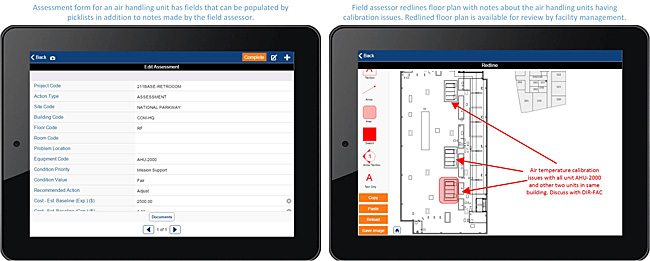
Figure 4: Each assessment task within the assessment project can have purpose-built mobile forms and redlining capability for easy review by stakeholders.
Incident Reporting
Workplace incidents by their very nature are unpredictable in their location and time of occurrence, and in their impact on life and property. To ensure accountability and facilitate corrective action, many federal, state, and/or local governments have enacted workplace laws that mandate organizations to maintain written incident details, report certain types of incidents to governing bodies, and keep an annual record of numerous types of workplace incidents. OSHA laws in the United States are one such example. A mobile app that supports incident reporting can serve as a powerful facilitator of this process.
The process would begin with a health or safety officer who arrives at the scene of the incident. He would pull up a structured incident report form on his tablet, and proceed to enter information about the incident. He can record information such as names and contact information of persons involved, location, time, and cause of the incident, extent of injuries if any, and statements from eyewitnesses and other first responders. Using the mobile app, he pulls up a floor plan or GIS map of the incident location, annotates it with his own observations, and attaches it to the incident report. Along with photographs taken at the site, the officer then uploads the form to the central system for review as the incident is managed through resolution.
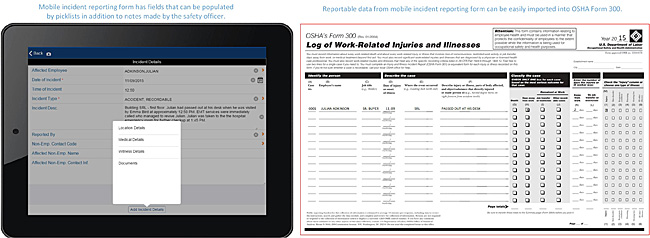
Figure 5: Reportable data collected with the Incident Reporting app can be easily and accurately transferred to OSHA Form 300 without the need for manual transcribing.
The benefits of this onsite mobile data collection, storage, and retrieval ability are significant. Inaccuracies in incident data are minimized since data recorded in the field are not manually copied from paper to computer. Eyewitnesses provide statements in-person and on-site, giving officers the ability to clarify statement ambiguities directly with the witness before entering the statements on the tablet.
Further, the information from the uploaded field report can now be imported without tedious typing into external reporting forms such as OSHA Forms 300 and 301, for later automated summarization into OSHA Form 300A. This automation eliminates incident recording errors, and frees up valuable time that safety and health officers can allot to other more pressing issues.
Security Considerations and Standards for Mobile Deployment
Securing app data along with access to the broader enterprise IT infrastructure by mobile devices presents unique challenges. A lost tablet in the hands of an unauthorized person can invite attempts at password hacking; an outside contractor like a building assessor has to be given access to apps and data that meet the needs of their job function, yet prevent access to other software applications and data; and data transferred over the Internet between a mobile device and the central system can become a target for eavesdropping.
An in-depth discussion about security standards and techniques implemented within the framework of an enterprise IT network is outside the scope of this article. But it is essential that infrastructure and facilities staff know what to look for when evaluating the security capabilities of a vendor's mobile solution. This will facilitate unambiguous communication between facilities and IT departments about implementation and testing requirements, leading to a smoother transition to the mobile infrastructure and facilities management solution. These security features are reviewed in Figure 6.

Figure 6: Security components for mobile access to infrastructure and facilities management mobile implementations.
Mobile Device Registration
Registering a mobile device uniquely associates the device with the infrastructure and facilities management user account. This means that only a specific authorized user can access specific mobile apps from that particular device. If the device is lost, system administrators can immediately deny all access to apps from the lost device.
User Authentication
Authentication of user credentials establishes the legitimacy of the user attempting access to data via the mobile apps. Commonly implemented credentials include shared key (password), one-time password (OTP), digital certi?cate, or biometric credentials. Enterprise-class apps will generally offer a variety of methods that can be selected to authenticate user credentials. These include:
Application level authentication: User credentials authenticated for and by the installed vendor's central infrastructure and facility management system.
External authentication: User credentials authenticated for the central infrastructure and facilities management system by an external server such as an LDAP server.
Single Sign-On (SSO) authentication: User credentials authenticated for multiple software systems by an external server typically called an SSO server.
User Authorization—Mobile Users, Roles, and Security Groups
Authorization is the process of determining the specific electronic resources an authenticated user has access to. A full discussion of authorization techniques is outside the scope of this article. However, a closer look at one particular technique that is well suited to mobile infrastructure and facilities management apps, is application level authorization. Application level authorization commonly uses roles and security groups to achieve the desired results as explained next.
Assigning a role to a selected collection of users provides the same privileges and restrictions to mobile apps and app data for that collection of users. This "as necessary" access to data maintains the confidentiality of data outside the purview of the designated role. For example, a team of HVAC technicians working different shifts at a large office complex might all be assigned the role of HVAC Craftsperson. They would be given access to maintenance apps, but not to space and occupancy management apps.
Security groups provide an additional level of access restriction once a role is given access to a mobile app. A role can be assigned to a security group that permits access to only selected forms, fields, tables, page views, or menu items within the application. For example, only users assigned to the role of Maintenance Manager and belonging to security group O&M Supervisor would have access to the approval page for certain kinds of work requests.
IT, infrastructure, and facilities staff share another important benefit: service requests related to mobile apps not visible to the user are eliminated, lowering the cost of operations.
Stakeholder Engagement in Successful Implementation
A successful implementation of a mobile infrastructure and facilities management solution is achieved through the engagement of those impacted by the transition to a mobile environment. For this to happen, mobile project leads must engage all stakeholders, not just the obvious ones. For example, a space surveyor uses the space survey app to document a broken door lock to an office holding confidential documents. The office has to be immediately secured by security staff until the door lock can be fixed. In the past, security staff would receive a phone call from a conscientious occupant about the broken lock. Going forward, with the mobile app and central system in place, security staff will receive a high priority text message on their smartphones with a link to the problem details and location.
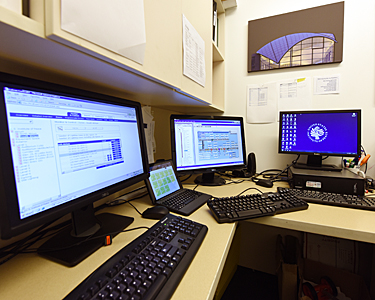
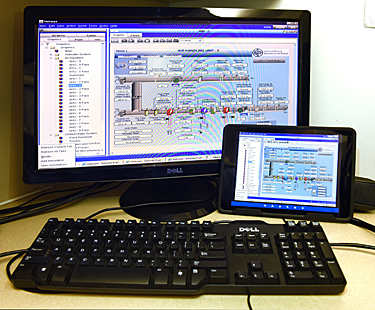
Computers in the engineer's office at the U.S. Institute of Peace help manage and monitor the building and its systems. The Building Automation System (BAS) and the Lutron lighting Energy Management System (EMS) can be reviewed on iPads as shown, allowing for continuous or remote management.
Mobile deployment project leads must communicate the benefits of the mobile app and system to security staff to dispel their fears and make them enthusiastic adopters. Acceptance by front line security staff makes it easier for project leads to recommend to management changes to security policy that incorporate the new mobile technology.
Effective communication with stakeholders takes on many forms. Training webinars help transfer mobile app knowledge and workflow process changes to a wide audience. Periodic e-newsletters celebrating department level implementation success stories build stakeholder confidence in the new system.
Mobile apps accelerate the availability of data to stakeholders. Informing stakeholders about this accelerated availability of data specific to their needs will soon make them champions of the cause. Asset managers responsible for developing the Facility Condition Index at asset heavy organizations such as international airports, railway networks, military bases, and manufacturing plants would be typical candidates for this targeted communication.
Finally, encourage both self-learning and peer learning. Record webinars and training sessions that can be viewed at will by stakeholders. Make mobile product help documentation available online to all users. Start an online bulletin board that organizes topics by domain application such as Mobile Space and Occupancy Surveys and Mobile Incident Reporting. By addressing the engagement needs, targeted communication, and learning requirements of stakeholders, implementation of the mobile infrastructure and facilities management solution will be well on its way to success.
Summary
The timely field data entered using the mobile apps, together with the computational and reporting capabilities of the Central System help stakeholders make operational decisions that are driven by the data at hand. Data originating in one functional area of an infrastructure and facility life-cycle management system can be made visible to operational and executive stakeholders in other functional areas. The result is greater collaboration across the enterprise.
With a mobile infrastructure and facility management system in place, the organization can directly link strategic decisions with operational outcomes throughout the enterprise, enabling it to optimize the use of its infrastructure and facility asset base and improve business processes, resulting in the accomplishment the larger organization mission.
Additional Resources
Publications
- ISO 55000: Asset management—Overview, principles and terminology International Organization for Standardization (ISO), 2014.
- ISO 55001: Asset management—Management systems—Requirements International Organization for Standardization (ISO), 2015.
- ISO 55002: Asset management—Management systems—Guidelines for the application of ISO 55001 International Organization for Standardization (ISO), 2015.
- Injury and Illness Recordkeeping Forms 300, 300A, 301 by Occupational Safety and Health Administration (OSHA). United States Department of Labor, 2004.
- Network Authentication, Authorization, and Accounting, Part One: Concepts, Elements, and Approaches by Sean Convery. Internet Protocol Journal, Volume 10, Number 1, March 2007.

